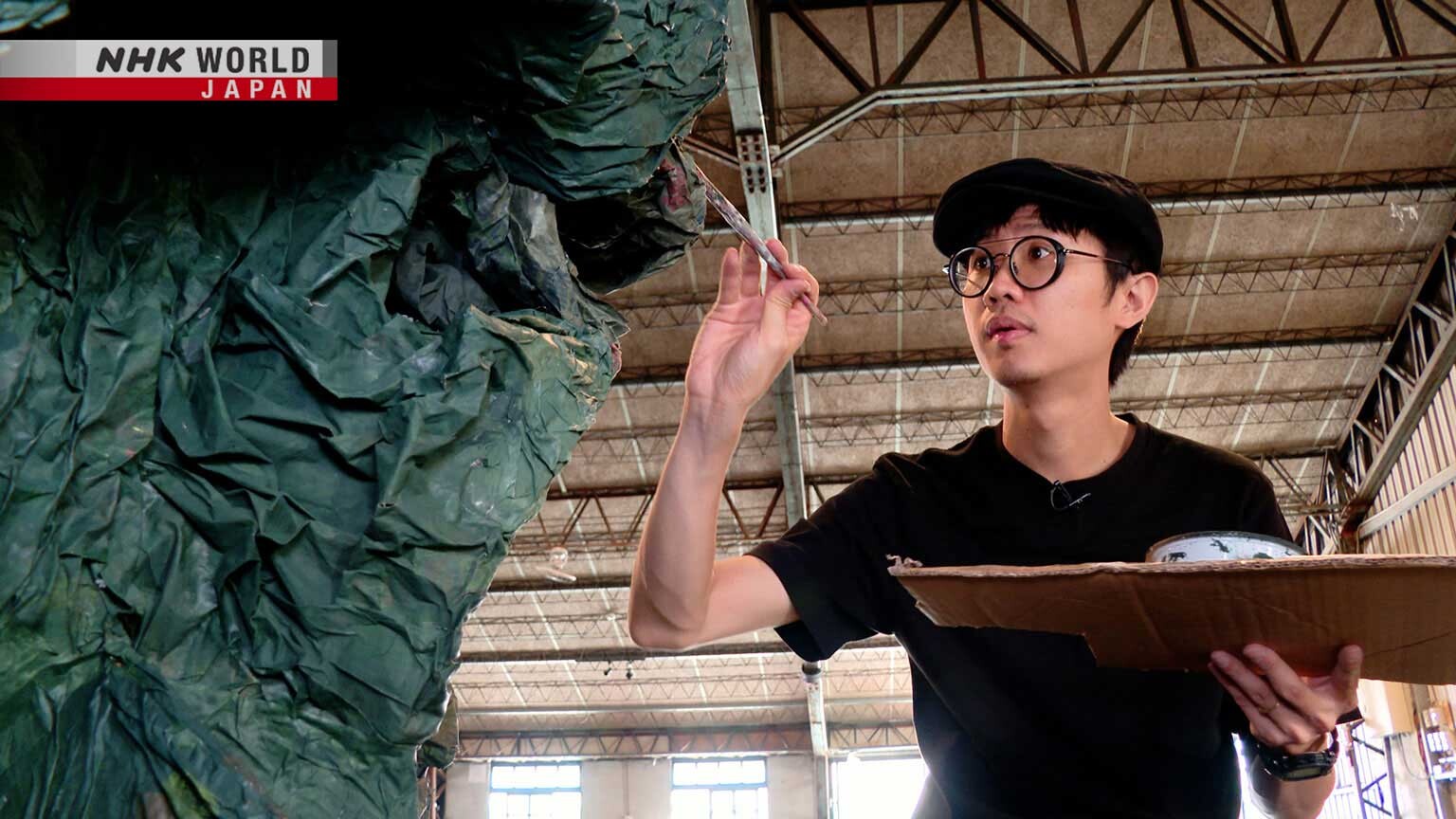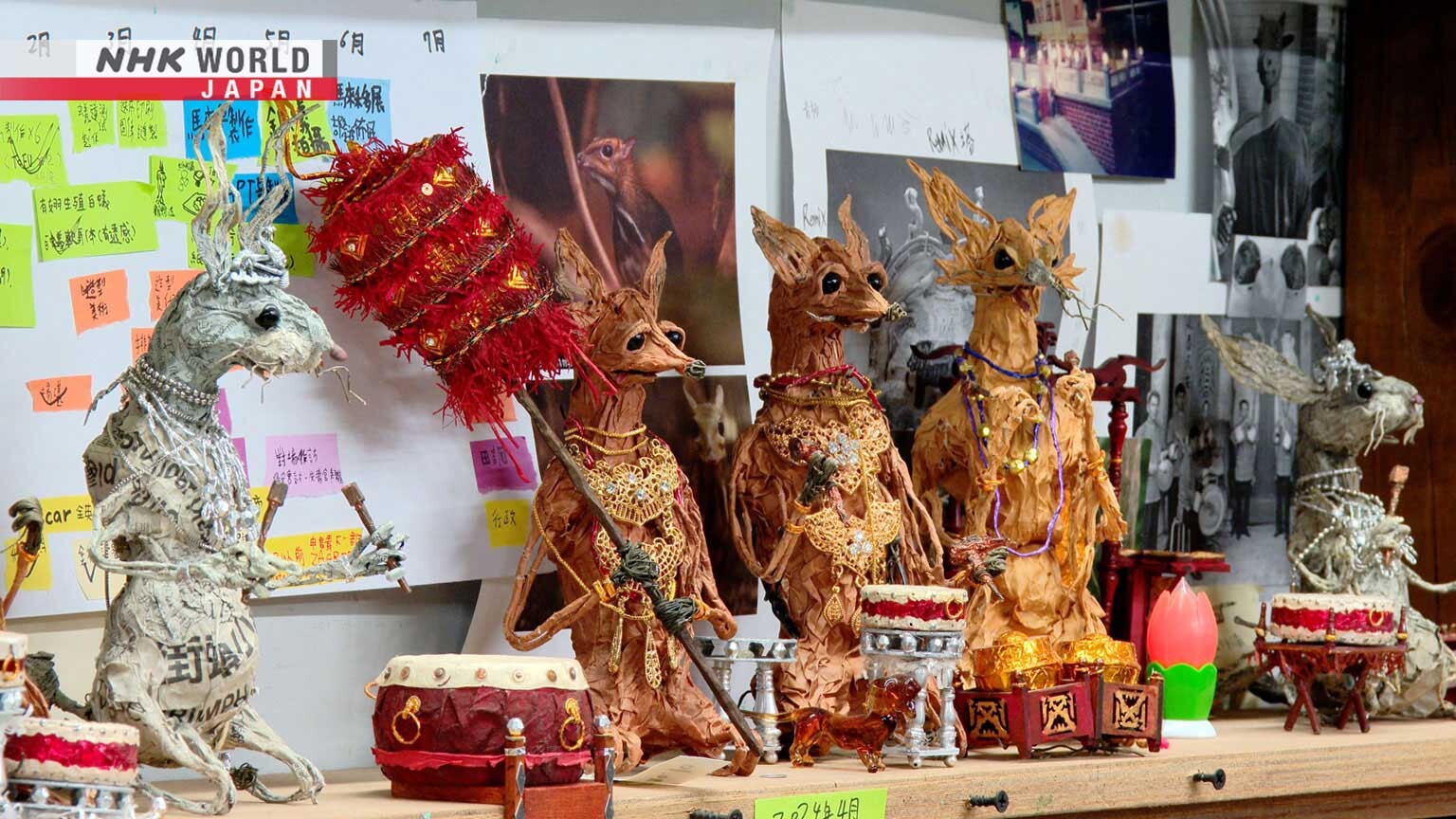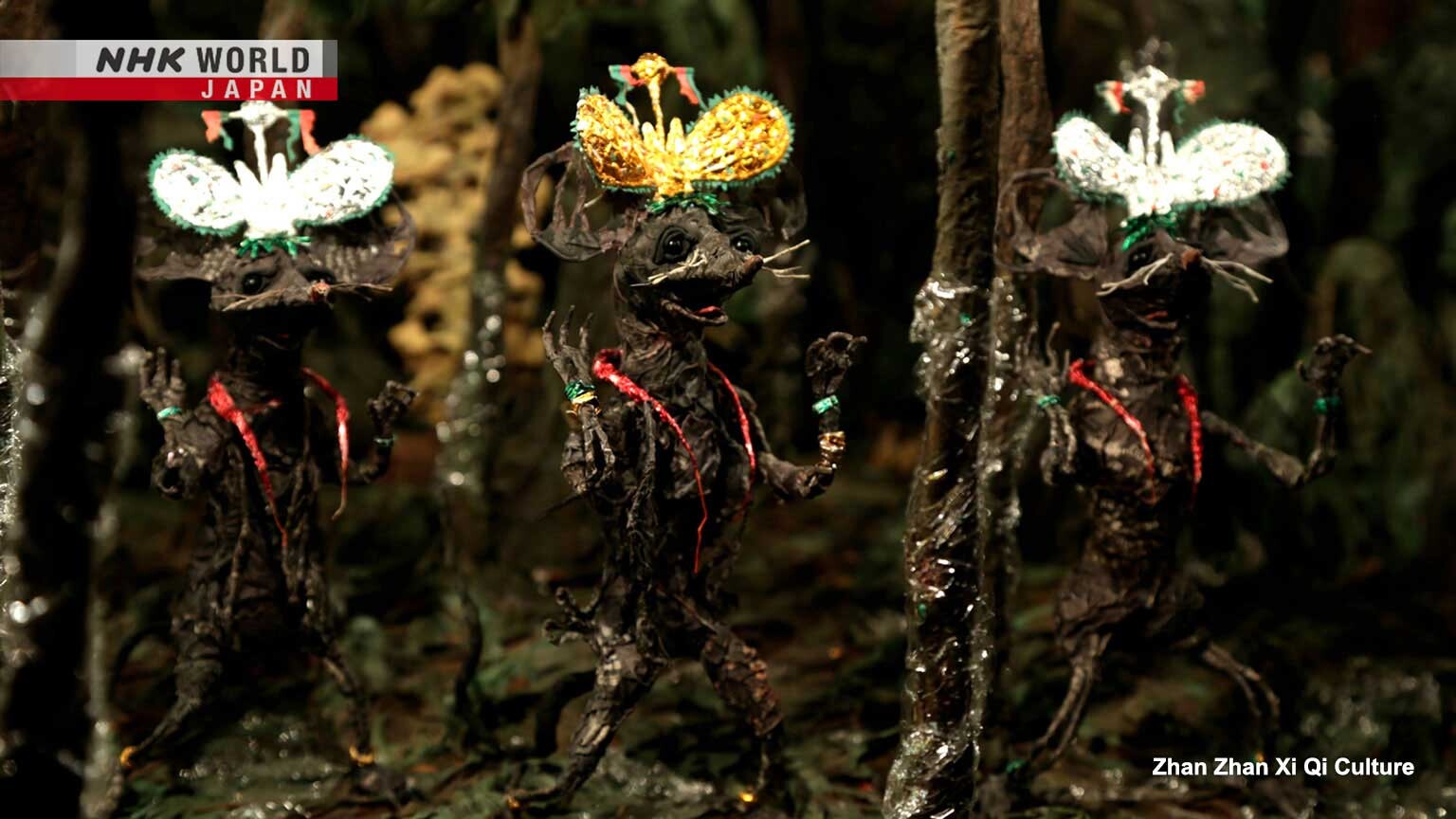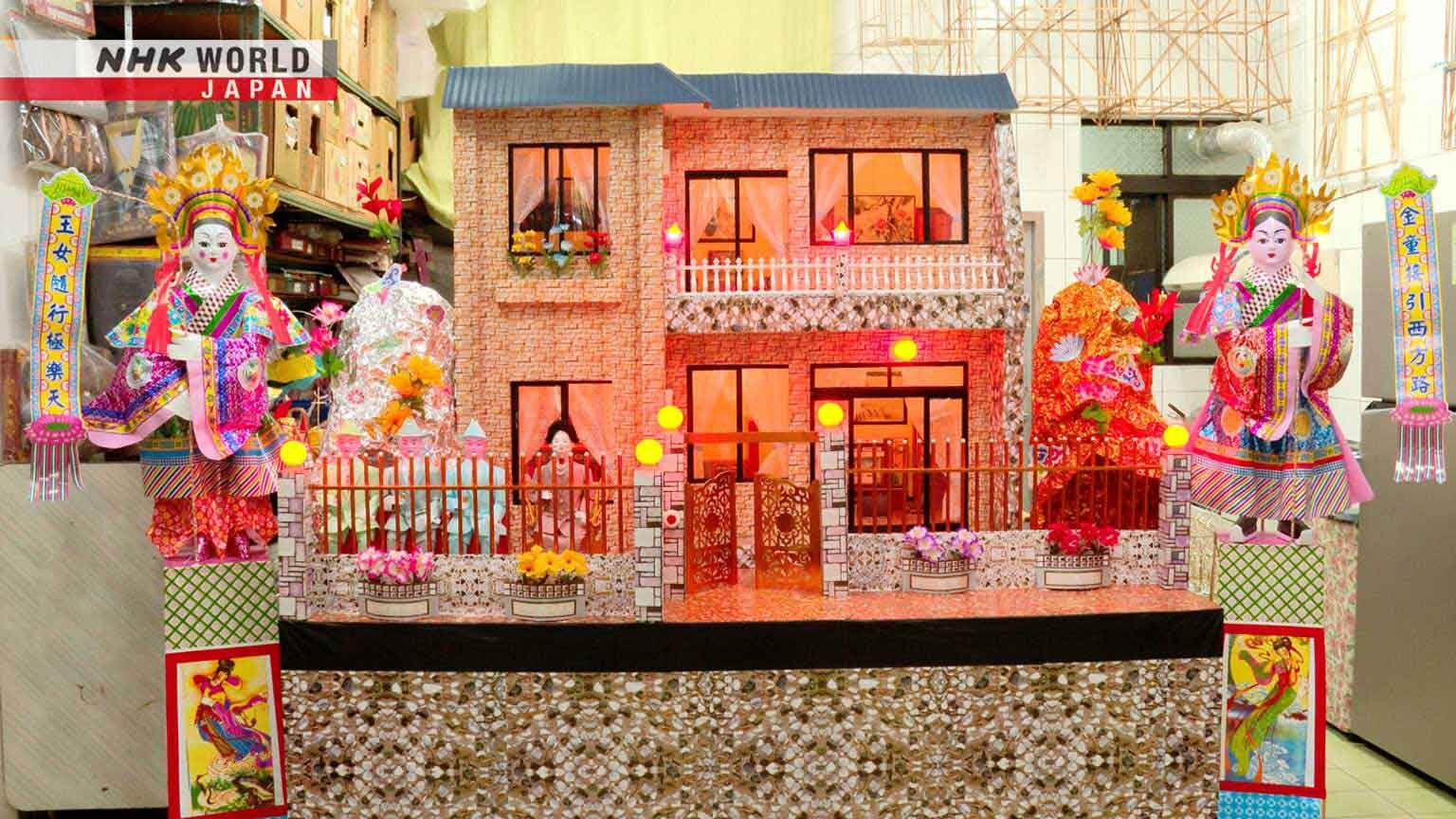Reinventing Taiwanese Papercraft: Zhang Xu Zhan / Artist
The artist Zhang Xu Zhan is receiving global acclaim for highlighting traditional Taiwanese papercraft. He fuses it with digital technology to create paper dolls, animated films and other works.




Transcript
Direct Talk
A Taiwanese artist is attracting
global attention for his art
that incorporates
traditional papercraft techniques,
used at funerals across Greater China.
The work of Zhang Xu Zhan
includes dolls and animation.
It's been displayed around the world.
In 2022,
he took the prize for Best Animated Short Film
at the prestigious Golden Horse Awards.
Zhang Xu's work shines a light
on a traditional handicraft
that's in danger of dying out.
Traditionally, paper objects
are burned at funerals.
Their life is short.
But through my films,
they last forever.
I take influence from tradition.
Then I reinvent it with new techniques.
This combination of traditional
papercraft and digital technology
has won international acclaim.
Zhang Xu spoke to us about
the thought that goes into his work.
Reinventing Taiwanese Papercraft
Zhang Xu's studio is in
New Taipei City in northern Taiwan.
He makes use of
familiar landscapes and events.
When he comes up with an idea,
he sketches it out,
and puts it where he can see it.
Much of his work uses wire models,
coated with layers of paper.
The unpredictable wrinkles
that appear during this process
form a large part of the artwork's charm.
Compound Eyes of Tropical
The award-winning animation is called
"Compound Eyes of Tropical."
The 16-minute film shows a mouse-deer
crossing a crocodile-infested river.
It took three years for Zhang Xu to make.
The story deliberately omits
details about the characters and plot,
allowing each viewer to develop
their own interpretation.
Compound Eyes of Tropical" presents
a great deal of metaphor and symbology.
The visible isn't always true.
It may be a constructed illusion.
Perhaps you need to question
that which is symbolic.
And that can open up a whole new world.
The story is based on
a well-known Indonesian folk tale.
Indonesian folk tales inspired me
to research other countries,
and I found many similar stories.
In Taiwan there's a story
about a rat crossing a river
on the backs of water buffalo.
I do think that countries are
characterized by their traditional culture.
It's an important, distinguishing feature.
But at the same time, I also believe that
culture is all intrinsically connected.
It's simply expressed in different ways.
That's how I see it.
So we all share a connection,
regardless of nationality.
Tokyo, Japan
The film was well-received around the world,
including in the UK, South Korea and Japan.
People were instantly drawn in.
The visuals alone prompted
gasps of amazement.
It attracted a lot of viewers.
I think it's very impressive.
It's a world-view that combines
the old and the new.
Zhang Xu's family home is
a 10-minute walk from his studio.
It's a papercraft shop, founded around
120 years ago by his great-grandfather.
Zhang Xu runs the business
with his parents, sister and wife.
Papercraft is an essential element
of funerals and other ceremonies.
Houses and dolls are made by
pasting paper onto bamboo frames.
They're set alight,
representing a desire for the deceased
to enjoy a prosperous afterlife.
The objects exhibit
such artistry and craftsmanship
that it often seems a shame to burn them.
As a child, during summer vacations,
I'd help prepare for an event
where we pray to our ancestors.
People with no experience of papercraft
may find it mysterious or even sacred,
but it's always been familiar to my family.
That gave me a unique perspective
that has influenced my artistic career.
Around 20 years ago,
almost every funeral featured papercraft.
But a lack of suitable venues,
environmental concerns,
and a waning interest in religion
have led to a steady decline in the practice.
As I got older, demand for papercraft
gradually faded away.
My parents advised me that I needed to learn
new skills if I were to have a chance.
They told me that I didn't have to
take over the family business.
Zhang Xu studied at a top arts university,
with the goal of becoming a filmmaker.
2011 marked a turning point.
The family business was in danger of closing.
It seemed like the store
was going to close its doors.
And at that time, there were
two thoughts that came into my mind.
I thought it was a cultural loss, but also
that it was unavoidable.
For me, these felt like two extremely
contradictory feelings.
So I decided to create a video
that would act as a kind of memento.
Zhang Xu apprenticed under
his father to learn the skills,
and combined it with the knowledge of
digital technology he acquired at university.
I didn't feel any kind of duty
to promote papercraft.
When creators become
too focused on that kind of goal,
they often end up restricting themselves.
That causes them to lose sight
of the diversity that exists in society.
So I took a more personal approach.
I worked with a sense of freedom.
If my art attracts attention, people will
learn about the culture of papercraft.
My work contains the old and the new.
That's what I strive to achieve,
both now and in the future.
In 2021, Zhang Xu was named an
"Artist of the Year" by Deutsche Bank.
The company puts significant resources
into supporting contemporary art.
I was honored that my son
received this prestigious award.
All I can do for him is
teach him the old techniques.
Papercraft techniques are
in danger of dying out.
After that, all that's left
is to watch over him.
One of the great joys of Zhang Xu's work
is the fact that it can be perceived
in many different ways.
This early piece shows a joyful dance
by mysterious plants and animals.
In the center is an emaciated dog,
representing the decline
of traditional papercraft.
Sometimes my work looks fun,
but it's actually talking about death.
Or it seems sad, but there's
an underlying element of hope.
I like that kind of double meaning.
I think it probably comes in part
from my childhood experiences.
Whenever customers would
come into the family shop,
they would be going through
a really hard time.
The reason they were coming to us
was so that we could help them through
this difficult period in their life.
Our task was to create
beautiful paper objects.
And through that work,
we were able to help people say
goodbye to their loved ones.
Si So Mi
Zhang Xu makes full use of the skills
he learned from his father.
In this scene, rats dance to a jaunty tune.
Water climbs fantastically up the trees.
This is expressed with cellophane
—a common papercraft technique.
I pay attention to the materials
that are traditionally used.
Combining this with stop-motion animation,
I'm able to expand my range
of visual expression.
As many people move towards
the study of AI technology,
I actually think that
handmade films like mine
will conversely become more valuable.
Handmade objects have
a kind of warmth to them.
They're extremely time-consuming to make.
But at the same time, that's precisely
what gives them their distinctive charm.
Here, Zhang Xu is working on
a piece for a Malaysian art gallery.
The exhibition will open in the coming month.
A jungle embodies the world of
"Compound Eyes of Tropical."
Within, we see animals
like mouse-deer and crabs.
Zhang Xu is looking forward to hearing
about the attendees' interpretations,
and the conversation his work provokes.
The boundaries of my work are always blurred.
Something may look like
a human or an animal, but
there's no clear definition.
I have an ambiguous
perspective on everything.
Cultural context affects
the interpretation of folk tales.
I hope my work inspires
international discussion.
Do you have any words to live by?
Questioning leads to opportunity.
Creating leads to hope.
When I was a child,
playing with clay in my room,
the possibility of becoming a visual artist
never occurred to me.
I soon realized that my lack of imagination
was limiting my way of thinking.
I think that if you
continuously question yourself,
you'll be able to create opportunities.
And the impossible becomes possible.
Don't try to predict the future.
Simply act, without thinking too much,
and you'll have hope.
I wrote these words
as a reminder not just to myself,
but to all the other creators out there.